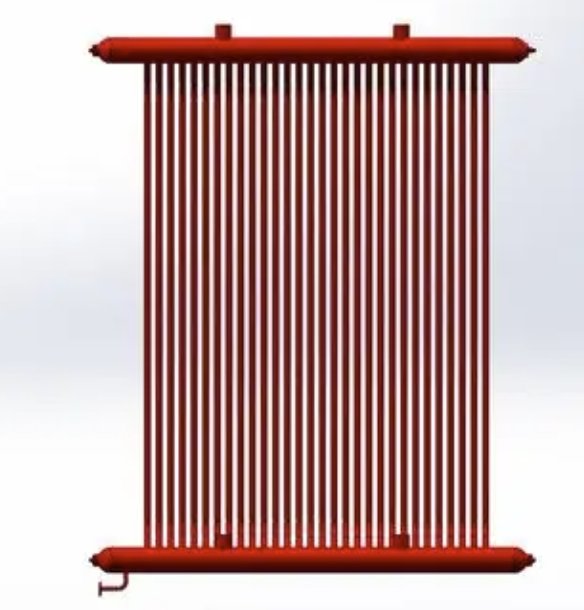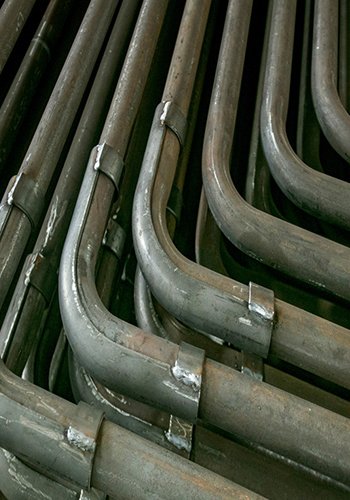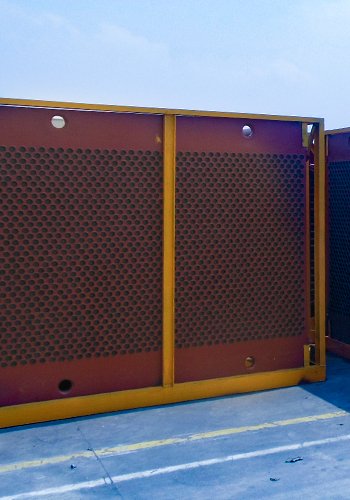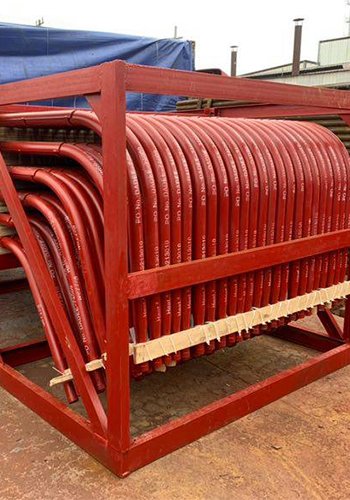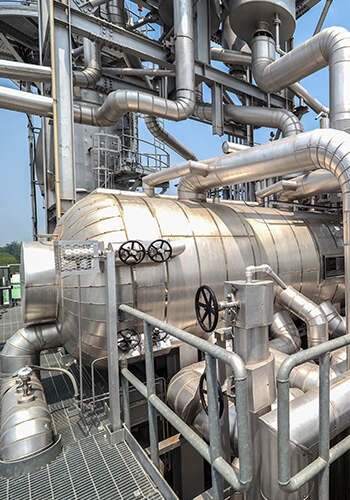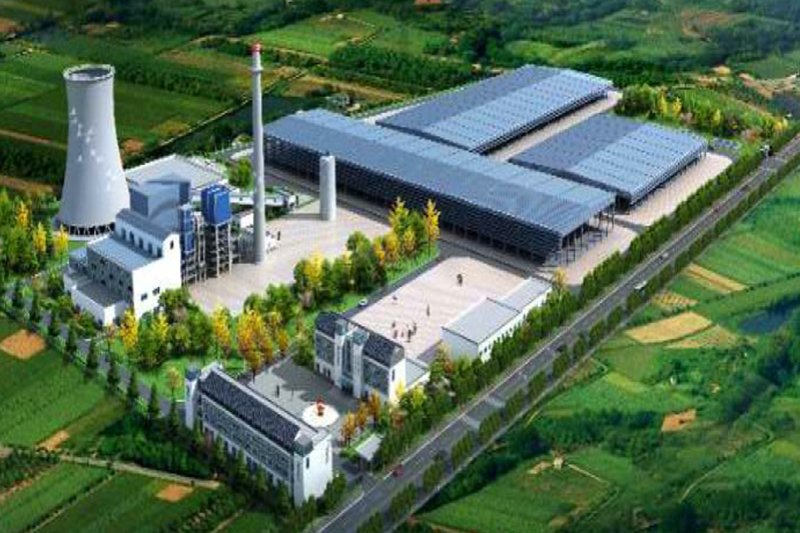Comparing membrane water walls and finned tube water walls is essential for several reasons:
- Performance Optimization: Understanding the distinctions between these two water wall designs enables boiler engineers and operators to optimize the performance of their specific boiler systems. The choice between the two can significantly influence a boiler’s overall efficiency and heat transfer capabilities.
- Cost Efficiency: By making a comparative analysis, it becomes possible to assess the cost-effectiveness of these different water wall types. This information aids in budget management and resource allocation for boiler projects, helping to minimize initial costs and long-term operational expenses.
- Environmental Impact: The selection of a water wall design can have environmental consequences. Comparing these options allows for the choice of a design that maximizes energy efficiency and minimizes emissions, contributing to more environmentally sustainable boiler operations.
- Safety and Reliability: Different water wall designs may offer varying levels of safety and reliability. An in-depth comparison is essential to ensure that the chosen water wall design complies with safety standards and provides dependable long-term performance.
- Application Specificity: Different types of boilers and industrial applications may necessitate specific water wall configurations. Through a comparative analysis, industries can make informed decisions based on their unique operational needs, ensuring that the chosen design is well-suited for the intended application.
Membrane Water Walls
Membrane water walls, also known as water-cooled walls, are essential components in many types of boilers. They play a crucial role in the efficient operation of the boiler system.
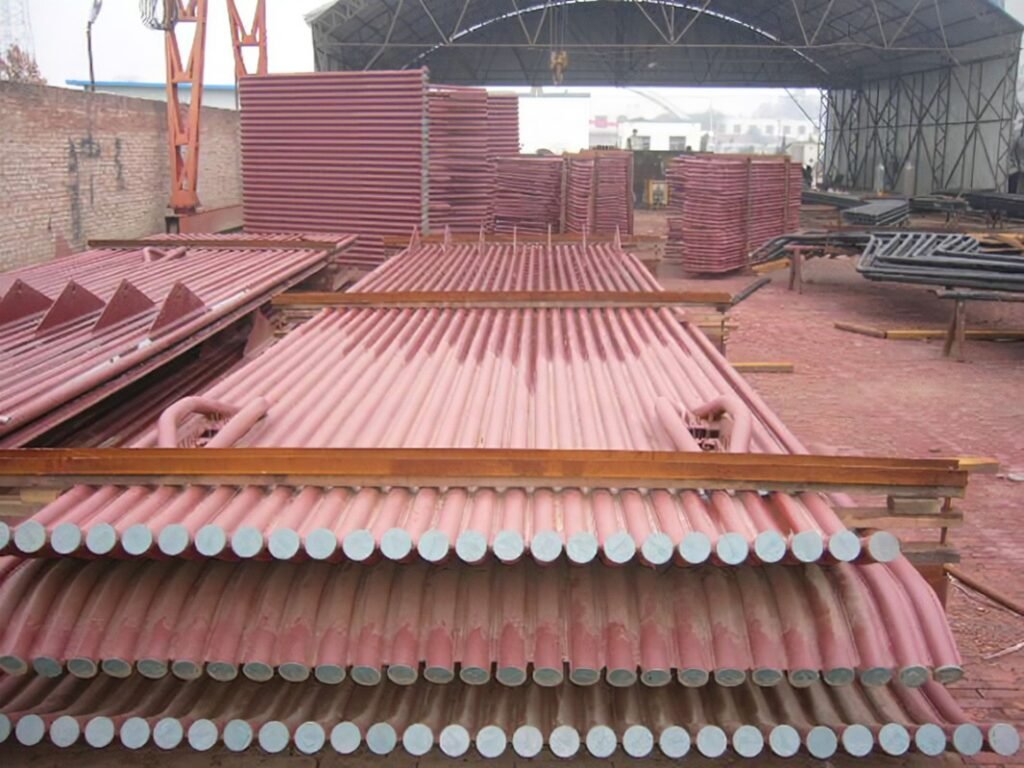
What is a Membrane Water Wall?
Membrane water walls are employed in two primary configurations. One design flattens steel between closely arranged light tubes to create the membrane water wall, while the other utilizes finned tubes formed through rolling and subsequently welded together. These water walls deliver superior protection for the furnace wall, reducing its weight and thickness significantly.
Insulation Efficiency
One of the notable advantages of membrane water walls is their inherent insulation properties. This characteristic obviates the need for additional insulation materials, contributing to a streamlined design. Simultaneously, the increase in metal consumption for the water wall is minimal, making it an efficient choice for conserving resources.
Enhanced Airtightness and Thermal Responsiveness
Membrane water walls exhibit excellent airtightness, substantially reducing furnace air leakage. Their lower heat storage capacity results in rapid temperature changes within the combustion chamber. This property not only accelerates heating and cooling but also shortens start-up and shutdown times.
Modular Assembly and Quality Assurance
For added convenience and quality assurance, these water walls are typically preassembled as modules in the factory. This not only streamlines the installation process but also ensures a high standard of workmanship.
Complex Manufacturing and Design Considerations
Despite their numerous advantages, the manufacturing process for membrane water walls is relatively complex. Specific design considerations are necessary to accommodate their unique characteristics. For instance, ensuring that the temperature difference between adjacent tubes does not exceed 50°C is crucial. The water wall system must be constructed as an integrated welded suspension frame structure. This design requirement mandates providing ample space for expansion and extension.
Sealing Integrity
In the design of membrane water walls, special attention must be paid to the integrity of various components, including manholes, inspection holes, observation holes, and areas where tubes pass through the water wall. Effective sealing is paramount for optimal performance and safety.
Wide Application and Weight Reduction
Due to their significant advantages, membrane water walls have found widespread use. They are particularly prevalent in large boilers where they reduce the need for extensive brickwork and contribute to a lighter overall boiler weight.
Applications of Membrane Water Walls
Membrane water walls are commonly used in various types of boilers, including industrial boilers, power plants, and steam generators. Their design makes them well-suited for high-pressure, high-temperature environments where efficient heat transfer is essential.
Advantages of Membrane Water Walls
- Enhanced Heat Transfer: The continuous tube design ensures efficient heat transfer, resulting in improved boiler efficiency.
- High Durability: Membrane water walls are known for their durability and resistance to high-temperature corrosion.
- Reduced Maintenance: Their robust construction reduces the need for frequent maintenance, leading to cost savings.
Disadvantages of Membrane Water Walls
- Initial Cost: The installation of membrane water walls can be more expensive than other water wall designs.
- Limited Flexibility: Adapting membrane water walls to various boiler designs can be challenging.
Tubular Water Walls
Finned tube water walls, also known as rifled tube water walls, are constructed from conventional seamless steel pipes. They are typically positioned in close proximity to the inner wall of the combustion chamber in a vertical and parallel arrangement. These water walls are connected at the top to the boiler drum or upper header and at the bottom to the lower header. The number of water-cooled wall tubes placed within the same size furnace affects the heat absorption capacity of the water wall.
When more water-cooled wall tubes are arranged in the furnace, i.e., when the tube spacing is reduced, the water wall’s heat absorption capacity increases, enhancing the safety of the furnace wall. However, this reduction in tube spacing decreases the radiative heat received by the furnace wall from the flame, leading to less heat reflected onto the tubes. This results in lower metal utilization for the tubes. Conversely, a larger tube spacing reduces the total heat absorption capacity of the water wall, diminishing its protective effectiveness on the furnace wall. However, it results in higher tube metal utilization. Therefore, it’s essential to find an appropriate balance in tube spacing. Additionally, a steel framework is often required to support the water wall tubes to prevent tube deformation.
Materials Used in Furnace Walls
Furnace walls widely incorporate lightweight refractory materials and insulating materials. These materials serve the dual purpose of constructing furnace walls and, in the case of tubular water walls, can be laid over them, forming a tube-laying furnace wall for easier installation.
Applications in Boilers
Tubular water walls find common application in smaller capacity, medium to low-pressure boilers, and are particularly prevalent in the realm of small and medium-sized boilers.
Measuring Wall Density: s/d Ratio
The degree of closeness in the arrangement of tubular water walls is assessed through the s/d ratio. In smaller boiler systems, where the ratio (s/d) is relatively high (1.5 to 2), metal utilization is maximized. However, this comes at the expense of protective performance, necessitating the use of heavy-duty refractory brick furnace walls.
Lightweight Furnace Walls for Larger Capacities
As boiler capacity increases, the s/d ratio decreases (1.1 to 1.2), leading to lower metal utilization. This opens the door for the adoption of lightweight furnace walls, which offer cost-efficiency without compromising structural integrity.
Tube-Laying Furnace Walls
In cases where the s/d ratio falls below 1.1, tube-laying furnace walls become a viable option, optimizing the balance between metal utilization and protective performance.
Applications of Finned Tube Water Walls
Finned tube water walls are commonly used in boilers that require improved heat transfer capabilities, such as circulating fluidized bed boilers and waste heat recovery boilers.
Advantages of Finned Tube Water Walls
- Enhanced Heat Transfer: The finned structure increases the surface area, allowing for efficient heat exchange.
- Improved Efficiency: These water walls are well-suited for applications where high-efficiency heat transfer is crucial.
- Flexibility: They can be customized to fit various boiler designs.
Disadvantages of Finned Tube Water Walls
- Increased Maintenance: The finned structure may be more prone to fouling and corrosion, requiring more frequent maintenance.
- Higher Initial Cost: The manufacturing of finned tube water walls can be more expensive than conventional water walls.
The choice between membrane water walls and finned tube water walls depends on the specific needs of the boiler system. While membrane water walls offer efficiency and durability, finned tube water walls provide enhanced heat transfer capabilities. Understanding the advantages and disadvantages of each type is essential when selecting the most suitable water wall for a particular application in the realm of boiler water walls.
DHB Boiler
Discover The Superior Quality And Cutting-Edge Technology Of DHB Boilers. Explore Our Range Of Biomass Boilers, Waste Heat Boilers, And More. Take Your Industrial Operations To New Heights With DHB Boiler.
